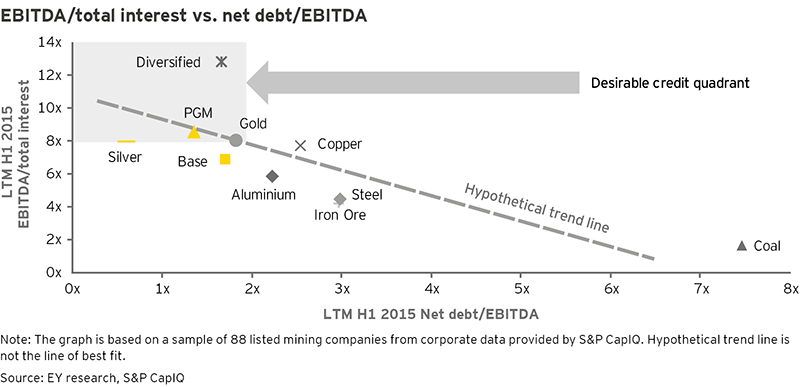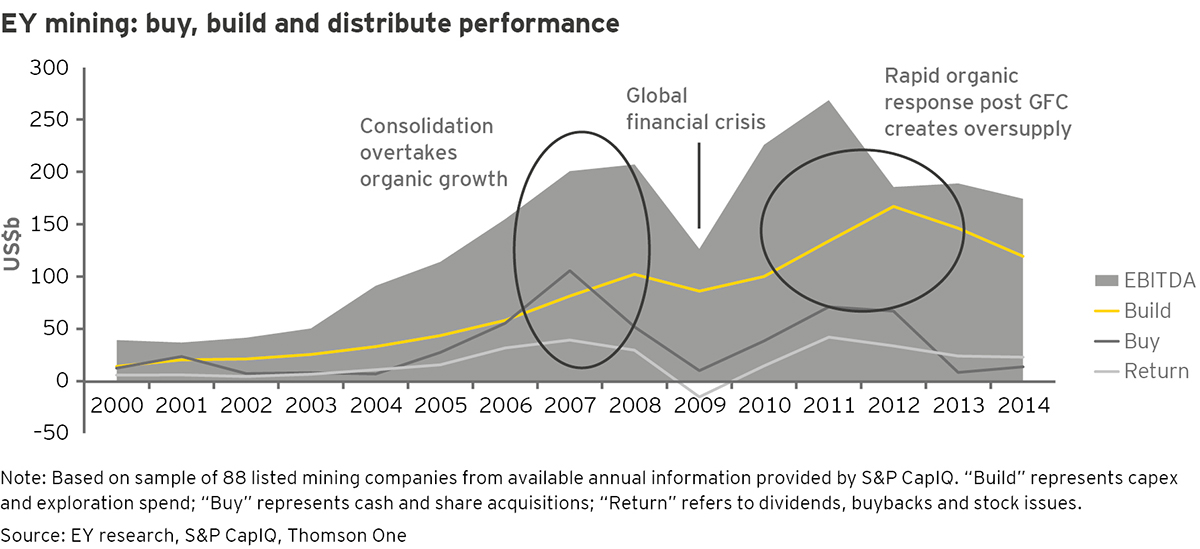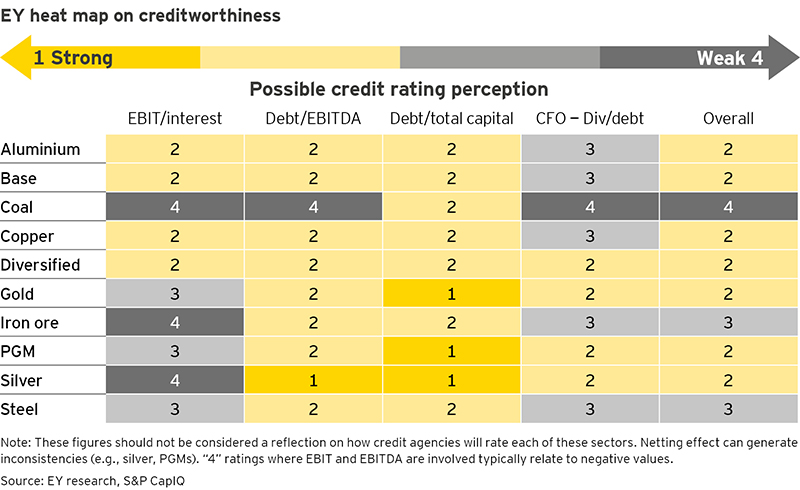Readers will know that the working assumption behind the MB outlook for global growth is that the commodities bust will continue as China slows, supply side expansions continue and the US dollar bull market stampedes ahead.
The first stage in the commodities bust is the destruction of shareholder wealth, which is well underway. Phase two is the destruction of asset values and debt, which is where we see the need for a global scale shakeout if commodity markets are to rebalance meaningfully.
Today we get more evidence of the same from Ernst and Young:
There are signs of distress across the industry but situations vary significantly by corporate
Continued deterioration in commodity prices has undermined cash flows, putting pressure on serviceability of existing commitments. This has affected some organizations more than others, depending on prior strategies followed and use of leverage historically.
EY analysis into a sample of 88 companies has found 2014 capital investment levels still exceeded those in 2009, despite a comparable metal price outlook
In addition, although mergers and acquisitions have been subdued since 2011, we notice shareholder distributions have not fallen as sharply during this period. It highlights how some management teams have persevered with existing corporate policies, tapping credit lines to weather these difficulties. There may be a number of reasons for this:
- Believing spot prices represent temporary, short-term deviations from in-house pricing curves
- Needing to recover costs from commissioning expensive mining projects
- The cost of moth-balling capacity exceeding losses from continuing operations
- Appeasing shareholders by maintaining dividends / shareholder distributions
Coal, steel, iron ore and potentially aluminium may experience future difficulties
This does not apply universally, as it depends on previous management decisions, along with country-specific factors – there will be winners and losers. Even for companies better placed, stress-testing their adaptability to low prices may help guard against over-ambitious price curves directing strategy. This may call into question future capex and / or dividend spend, where cash conservation may prove more prudent.
Retaining financial flexibility within a low-price environment is key
Budgeting for downside price forecasts can help identify and prepare contingencies for potential liabilities. Conditioning for low prices can also help with wider risk management concerning capex plans, capital structure, counterparty exposure, and other liquidity shocks. This can position companies favorably relative to those who fail to act.
Unlocking cash flows may represent long-term shareholder value
Several strategies can increase cash generation, strengthening capital buffers while positioning for an eventual cyclical upturn. For example, improved working capital practices will unlock capital tied-up in operations. This can complement initiatives to improve productivity and enhance margin recovery. Exploring alternative financing strategies (e.g., streaming or hybrids) can also improve operating flexibility and liquidity.
In short, miners have been leveraging up massively to complete the very projects that are now going to kill them. Such is capitalism!




